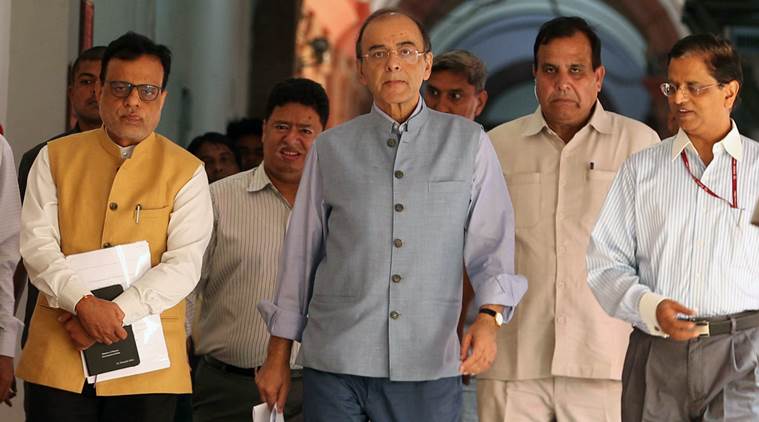cut in excise duty on petroleum products will put a strain in central government finances unless it is followed by a commensurate reduction in expenditure. Reducing government spend when growth rates are just about firming up is not on Finance Minister Arun Jaitley’s mind, but tax collections so far do present a challenge in meeting the targets for this financial year.
Any decision that adversely impacts the government’s efforts in fiscal consolidation may not be viewed favourably by the market and rating agencies. In the last four years, the government did not cut fuel prices — except once in October 2017 — despite rising costs of crude oil imports, taking full benefit of higher excise collections. In many ways, it helped Jaitley rein in the fiscal deficit, which stood at 4.4% of GDP in March-end 2014 when the NDA government took charge.
In 2016-17, the fiscal deficit was 3.5% of GDP, and remained stubborn at the same level in 2017-18 as well. In the current financial year, Jaitley is confident it would be down to 3.3% of GDP, which will be a tough act to accomplish. In November 2017, while upgrading the government’s bond rating to Baa2 from Baa3, credit rating agency Moody’s had said, “A material deterioration in fiscal metrics and the outlook for general government fiscal consolidation would put negative pressure on the rating. The rating could also face downward pressure if the health of the banking system deteriorated significantly or external vulnerability increased sharply.”
All three aspects of Moody’s warnings are at play now. Average monthly GST collections have been short of the Rs 1 lakh crore target over the last five months, and net direct tax collections in the first half of the current financial year is less than 40% of the annual target. The NPAs have risen, and have probably peaked, but the external sector poses its own set of problems with rupee having depreciated sharply by over 13% in calendar 2018.
On top of the excise duty cut, which will cost the exchequer Rs 21,000 crore in a full year, the government has asked oil marketing companies to share a burden of Re 1 per litre of fuel, which will result in under-recoveries. Thursday’s move is probably the first step in the path of the burden sharing formula put in place by the UPA government when petroleum product prices were regulated — a third of the burden to be borne each by the government, oil marketing companies and the consumers.
 Union Finance Minister Arun Jaitley with Finance Secretary Hasmukh Adhia and Economic Affairs Secretary Subhash Chandra Garg in New Delhi on Thursday. (Amit Mehra)
Union Finance Minister Arun Jaitley with Finance Secretary Hasmukh Adhia and Economic Affairs Secretary Subhash Chandra Garg in New Delhi on Thursday. (Amit Mehra)
Mumbai: Transporters, truck drivers disappointed on fuel prices cut
Market analysts said any step that reduces government revenue is a negative signal, especially for the bond market. Shares of oil marketing companies — HPCL, BPCL and IOC — fell up to 22.44 per cent Thursday as they have been asked to absorb Rs 1 per litre cut in fuel prices. “The price cut is credit negative for the PSU OMCs as this would impact their net marketing margins severely. At an industry level, this would lead to loss of margins of Rs 70-72 billion on auto fuel sales. Additionally, this would impact the morale of private fuel retailers who were aggressively expanding their retail network… the reversal of auto fuels price deregulation policy will hit the investor sentiment in the sector,” said K Ravichandran, Group Head & Senior VP, Corporate Ratings, ICRA Ltd.








